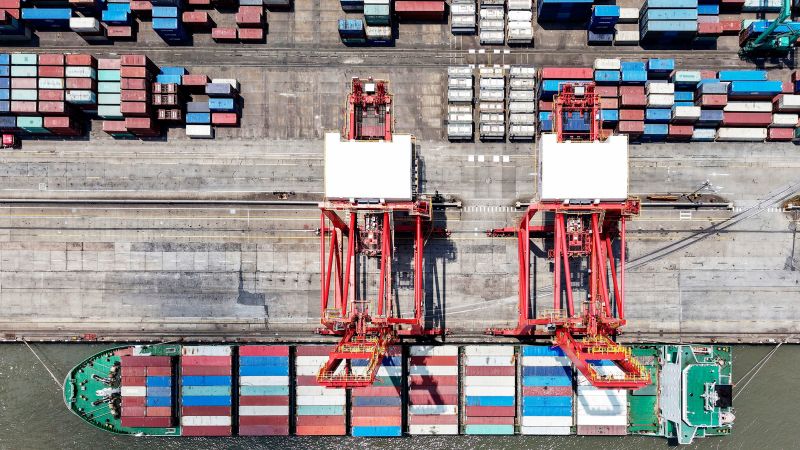The recent easing of tensions between the United States and China regarding trade has sparked significant activity within Chinese manufacturing sectors. The announcement of a 90-day rollback of heavy tariffs earlier in the week has prompted both American and Chinese companies to rush to capitalize on this temporary reprieve. As businesses on both sides of the Pacific look to seize the moment, the logistics and operations of numerous industries are experiencing noticeable disruptions and rapid changes.
In southern China, Niki Ye, a salesperson who specializes in sourcing toys for Amazon, reported a remarkable 30% increase in orders following the tariff rollback announcement. The upsurge in demand has compelled her company to expand its workforce to keep pace. She reflected on the early phase of this surge, stating, “And this is only the first week,” signaling an optimistic outlook for the coming months.
Simultaneously, dispersing across the landscape of China, Liu Changhai, a sales manager at an agency focused on home furnishings, revealed that despite sales matching the peak season figures, challenges remain. He emphasized that with numerous new orders placed, there would be significant delays in production readiness and shipment, highlighting the complexities vendors face amidst the sudden demand increase.
Chinese ports are preparing for a bustling environment as firms hastily attempt to ship goods that had been stalled due to prior trade tensions. The volume of container bookings from China to the U.S. surged nearly 300% within a week. This sudden shift contrasts sharply with the recent escalation of tariffs initiated by President Donald Trump, which brought trade between the two economies to a virtual standstill.
On Monday, negotiators from both nations, convening in Geneva, pledged to reduce tariffs for an initial period of 90 days, effectively cutting by 115 percentage points. As of Wednesday, this deal has brought U.S. tariffs on Chinese imports down to 30%, while Chinese tariffs on American goods decreased to 10% – a significant relief although certain pre-existing tariffs are still applicable. With negotiations likely to continue, the focus has shifted to maximizing operations within this temporary moratorium.
Industry experts, including Shanghai Xinhai Customs Brokerage chairman Ge Jizhong, underscore the necessity for companies to exploit this 90-day window for replenishing stocks and clearing out inventories. Coordinated efforts are being made to manage this rush effectively, amidst uncertainties around the duration of favorable trading conditions.
Ben Schwall, helming a supply chain management firm, has reported a flurry of inquiries from companies previously attempting to relocate their supply chains away from China. Some clients are reconsidering prior decisions, as they seek to resume orders initially canceled. The reversal reflects the significance of maintaining relationships with Chinese manufacturers, who might be experiencing workforce furloughs or factory shutdowns due to previous tariffs.
In Zhejiang province, manufacturer Vivi Tong is primed to handle the anticipated upsurge in product orders for remote-controlled cars, fully acknowledging the importance of this three-month window to fulfill and ship goods. Despite optimism, uncertainties loom large regarding market conditions post-90 days.
Further complicating the revival, Greg Mazza, an owner of a lighting company based in Danbury, Connecticut, is reacting swiftly to the news of reverted tariffs. He shared that both logistical volumes are surging and the competitive landscape for inventory is intensifying due to increased shipping costs. While he stands better positioned than some of his competitors—having built up inventory in preparation for the tariffs—he is also grappling with substantially higher duties under the new trade agreement.
Shipping costs have indeed escalated, with reports indicating an approximate 50% spike from earlier rates, which will ultimately affect American consumers as these added costs trickle down. Shipping companies, including Danish shipper Maersk, are responding to this rebounding demand by expanding their capabilities, adjusting to the recent increase in bookings for containers.
However, the potential chaos enveloping the shipping industry poses questions about the sustainability of this uptick and whether the increased activity can be effectively managed within the limited time constraints. There is considerable uncertainty regarding the future of U.S.-China tariffs and broader trade policies affecting imports from nearby regions, like Southeast Asia.
Ultimately, companies accustomed to navigating the complexities of the China-U.S. trade relationship now face the dual pressures of a limited reprieve from tariffs and the looming possibility of higher levies being imposed on goods sourced from other countries. The need for adaptability and strategic foresight has never been more pronounced, as manufacturers and retailers work to fortify their supply chains in a volatile economic landscape.
For many businesses, particularly those entrenched in the robust manufacturing network of China, the movement towards exploring new markets in Europe or elsewhere has become a strategic imperative. Companies like Tong’s are proactively seeking to mitigate risks by diversifying their customer bases and expanding their reach—a crucial move toward sustaining long-term growth amidst unpredictable trading environments.



